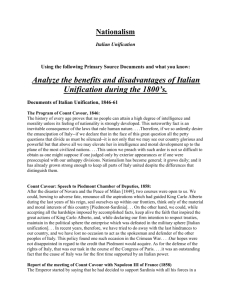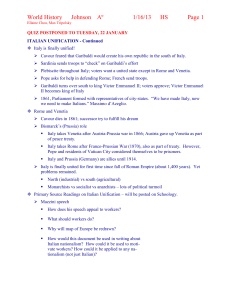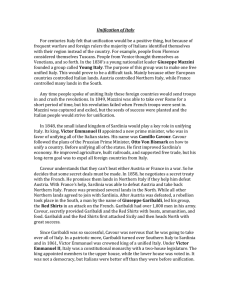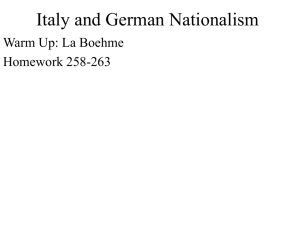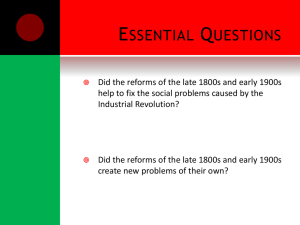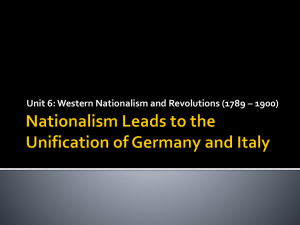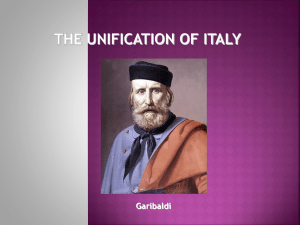(1) Giuseppe Mazzini (The Heart of Italy)
advertisement
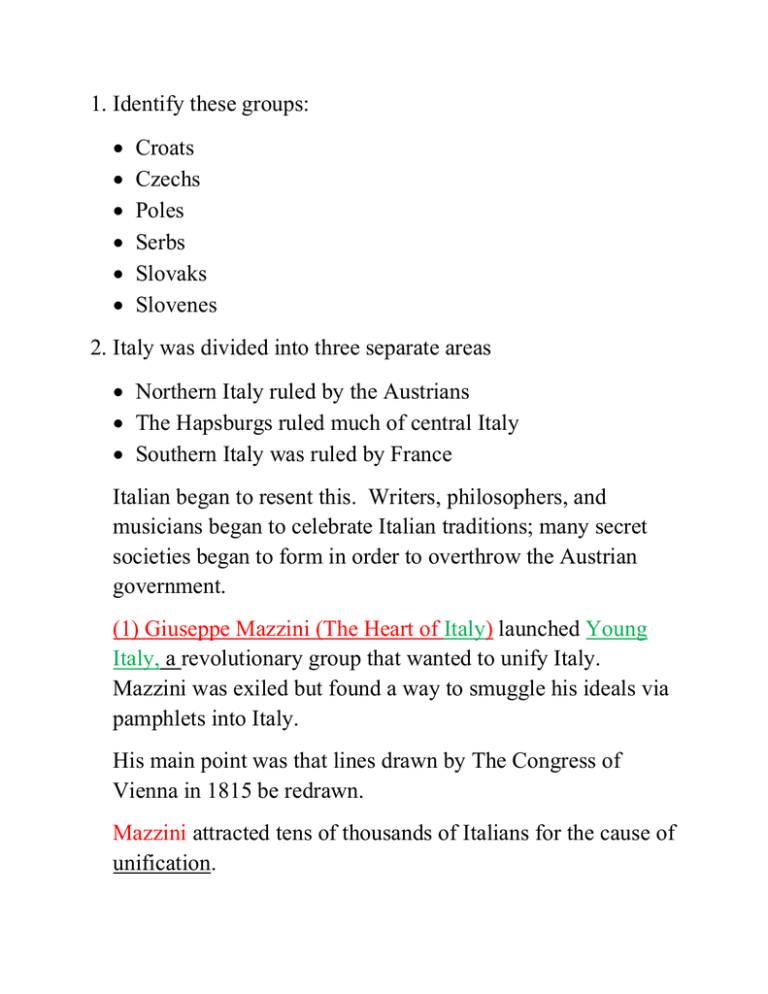
1. Identify these groups: Croats Czechs Poles Serbs Slovaks Slovenes 2. Italy was divided into three separate areas Northern Italy ruled by the Austrians The Hapsburgs ruled much of central Italy Southern Italy was ruled by France Italian began to resent this. Writers, philosophers, and musicians began to celebrate Italian traditions; many secret societies began to form in order to overthrow the Austrian government. (1) Giuseppe Mazzini (The Heart of Italy) launched Young Italy, a revolutionary group that wanted to unify Italy. Mazzini was exiled but found a way to smuggle his ideals via pamphlets into Italy. His main point was that lines drawn by The Congress of Vienna in 1815 be redrawn. Mazzini attracted tens of thousands of Italians for the cause of unification. Revolutions spread throughout Europe. 1848 Italian Nationalist led a rebellion against Austrian rule. The Italian state of Piedmont declared war against Austria. Austria won, the war lasted 1 year. 1849 Mazzini and two others seized Rome. French troops helped the Pope control Rome again. Failures of 1848 and 1849 did not weaken the hopes of Italian Nationalist. (2) Camillo di Cavour- the Brain of Italy emerged at this time he was a writer. Cavour founded a nationalist newspaper Il Risorgimento. Cavour became Prime Minister on the independent Kingdom of Sardinia in 1852. Cavour believed Italy should be a Monarchy. Camillo di Cavour made deal with France. He supported France in a war with Russia, gave France provinces of Savoy and Nice. France supported Sardinia in its planned war against Austria. The plan worked – by 1860 Northern Italy states were liberated from Austrian rule. (3) Giuseppe Garibaldi – the Sword of Italy Giuseppe Garibaldi joined Mazzini’s Young Italy. Garibaldi had to flee Italy twice. He went to South America where he learned guerrilla warfare. Came back to Italy for good in 1854. 5 years later Cavour asked him to lead part of the Sardinian army. Garibaldi joined Sardinian army – Italy regained Lombardy Austria kept Venetia Garibaldi and his followers were know as Red Shirts Garibaldi and the Red Shirts gained control of Sicily by 1860 Garibaldi favored a republic, yet he offered rule of Kingdom of Two Sicilies to King Victor Emmanuel of Sardinia Venetia and the Papal States were the only states that were not ruled by Italy at this time. They didn’t hold out long. By 1870 war between Austria and Prussia, Italy sided with Prussia; Prussia won and gave Venetia to Italy. War began between Prussia and France, France withdrew troops from Rome, and Italian unification was complete under King Victor Emmanuel. After Unification Catholic Church didn’t recognize Italy as a nation. Poverty was widespread Unemployment and high taxes caused violence Italians began to move By 1920 4.5 million Italians had emigrated to America Many reforms in Italy Voting – at unification on wealthy men could vote. By late 1800’s most adult male taxpayers could vote. Workers rights- limiting working hours, no child labor allowed Government encouraged building new transportation and water systems (to improve cities and attract new industries) Foreign Policy: 1882 Italy formed a military alliance with Austria-Hungary and Germany Known as the Triple Alliance Brought Europe to war in 1914
